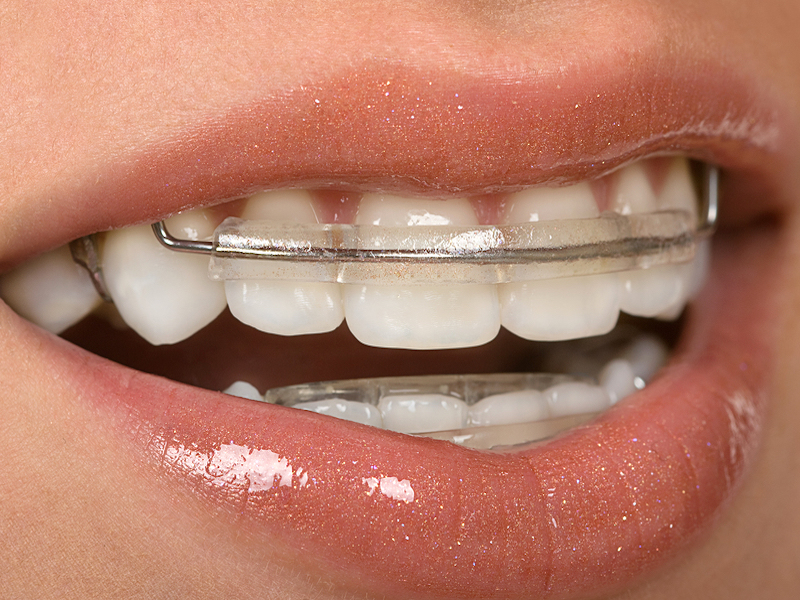Unlock the secrets to achieving a dazzling smile without the inconvenience of braces. In this comprehensive guide, we will explore effective ways to fix your gap and restore your dental harmony. As we delve into the topic, you’ll discover a range of treatments that can discreetly reduce or eliminate the space between your teeth, empowering you with the confidence to flaunt a captivating smile.

Image: www.burlingamesmilestudio.com
Understanding Diastema: The Cause of the Gap
A gap between teeth, medically known as diastema, is a prevalent dental concern that affects individuals of all ages. While small gaps can contribute to a charming or unique appearance, significant gaps can impact oral health and aesthetics. Understanding the root cause of your diastema is crucial for determining the most appropriate treatment option.
The space between the teeth can arise due to genetics, extra teeth, or improper jaw development. Gum disease, misaligned teeth, or an oversized frenulum (the thin tissue connecting the lips or cheeks to the gums) can also result in gaps. By pinpointing the underlying cause, you can effectively target the treatment and enjoy long-lasting results.
Exploring Treatment Options: Finding the Right Fit
To combat the undesirable gap between your teeth, several treatment options are available to fit your specific needs and preferences. Each method offers unique benefits and considerations, ensuring you make an informed decision that aligns with your desired outcome.
-
Bonding: This conservative treatment involves applying a tooth-colored resin to the teeth that flank the gap. Skilled dentists can mold and shape the resin to seamlessly close the space while preserving the structure of the adjacent teeth. Bonding is a cost-effective and time-efficient technique that can produce aesthetically pleasing results.
-
Veneers: These thin porcelain shells are custom-crafted to fit over the front surface of the teeth, effectively concealing the gap and enhancing the overall appearance of your smile. Veneers offer durability, stain resistance, and the ability to correct other dental imperfections. However, they require more extensive preparation than bonding, including the removal of a thin layer of enamel.
-
Interdental Stripping: For gaps caused by misaligned or crowded teeth, interdental stripping may be an appropriate solution. This technique involves carefully removing small amounts of enamel from the sides of the teeth to create the necessary space for proper alignment. Interdental stripping is typically followed by orthodontic treatment to stabilize the teeth and prevent the gap from recurring.
-
Orthodontics (Clear Aligners or Traditional Braces): These orthodontic appliances gently reposition the teeth over time, gradually closing the gap. Clear aligners are removable and virtually invisible, making them a popular choice for adults seeking discreet treatment. Traditional metal braces remain a reliable option for more complex orthodontic needs. Both methods require patience and commitment, as the treatment duration can span from several months to years.
-
Dental Implants: For gaps resulting from missing teeth, dental implants offer a permanent and highly functional solution. These titanium posts are surgically inserted into the jawbone, acting as a strong foundation for a custom-made dental crown or bridge. Implants replicate the natural tooth structure, ensuring optimal function and a gap-free smile.
Choosing the Ideal Treatment: A Pathway to a Radiant Smile
Navigating the array of treatment options can be daunting, making it essential to seek guidance from a qualified dental professional. During a thorough consultation, your dentist will assess your individual situation, considering factors such as the severity of the gap, the cause of the problem, and your aesthetic goals. With their expertise, you can collaboratively determine the most suitable treatment plan that empowers you to achieve your desired outcome.

Image: reverasite.com
Frequently Asked Questions: Addressing Your Concerns
To provide you with comprehensive information, here are answers to some of the most frequently asked questions regarding gap treatment:
-
Can gaps close on their own? In most cases, gaps do not close naturally and require professional treatment.
-
Is treating a gap painful? The majority of gap treatments, such as bonding, veneers, and interdental stripping, involve minimal discomfort. Orthodontic treatment can cause some initial discomfort, but it generally subsides over time.
-
How much does gap treatment cost? Treatment costs vary depending on the complexity of the case, the materials used, and the location of the dental practice. Bonding and interdental stripping are generally more affordable options, while veneers and implants tend to be more expensive.
How To Fix My Gap Without Braces
Conclusion: Embark on a Journey of Transformation
By choosing the right treatment and following your dentist’s guidance, you hold the power to transform your smile and restore your dental harmony. Whether you opt for bonding, veneers, interdental stripping, orthodontics, or dental implants, each method offers a path toward a gap-free smile. Shed the hesitation and embrace the opportunity to unlock a radiant smile that radiates confidence and joy.